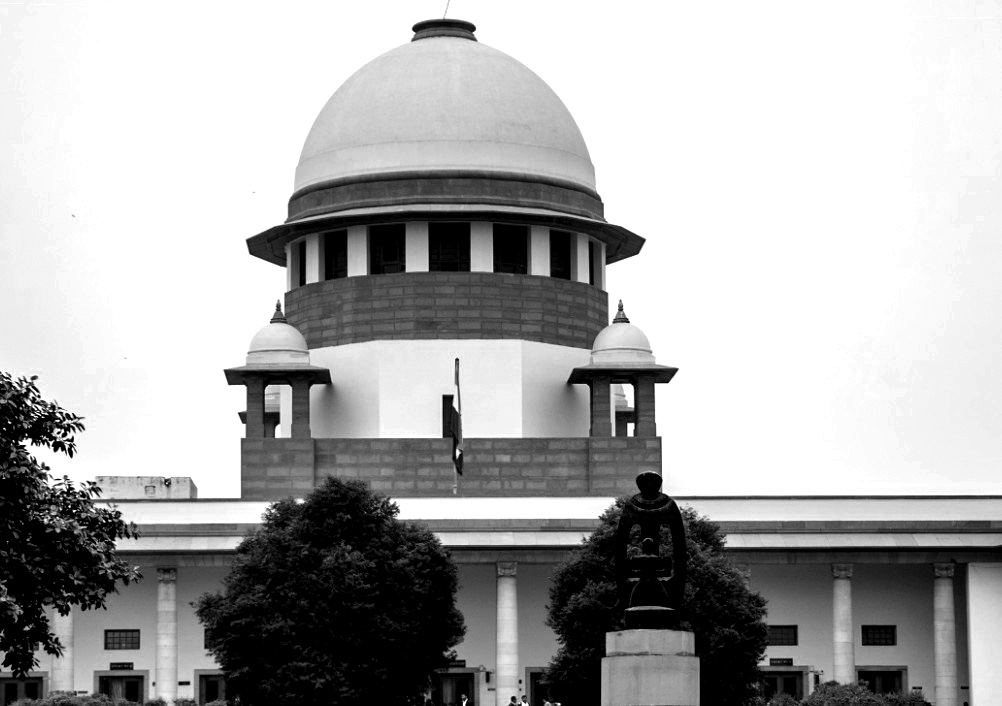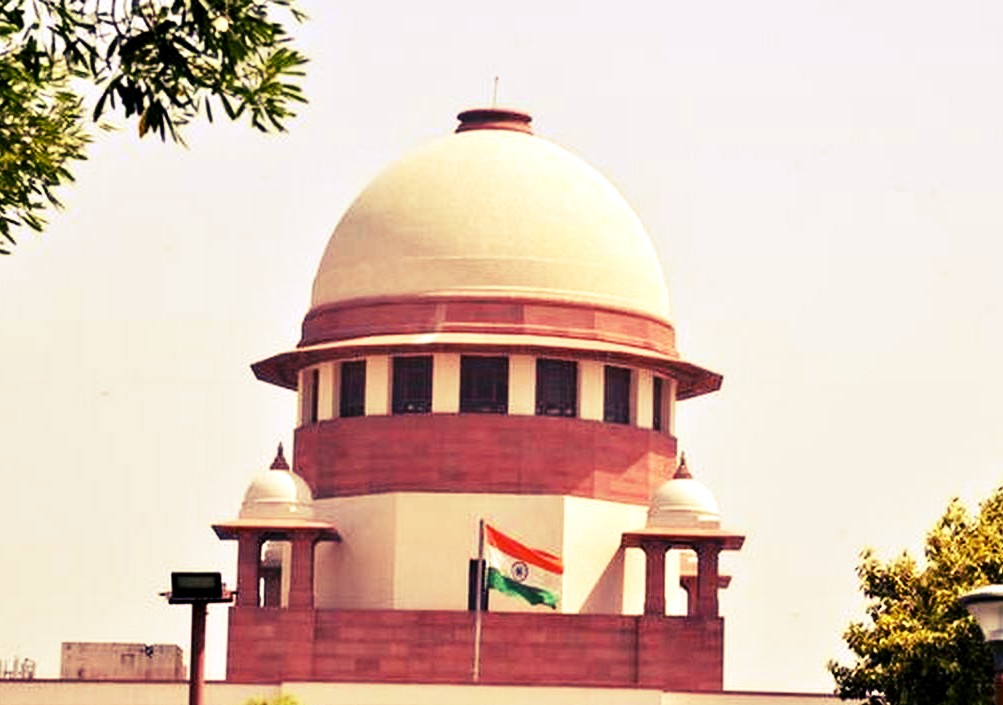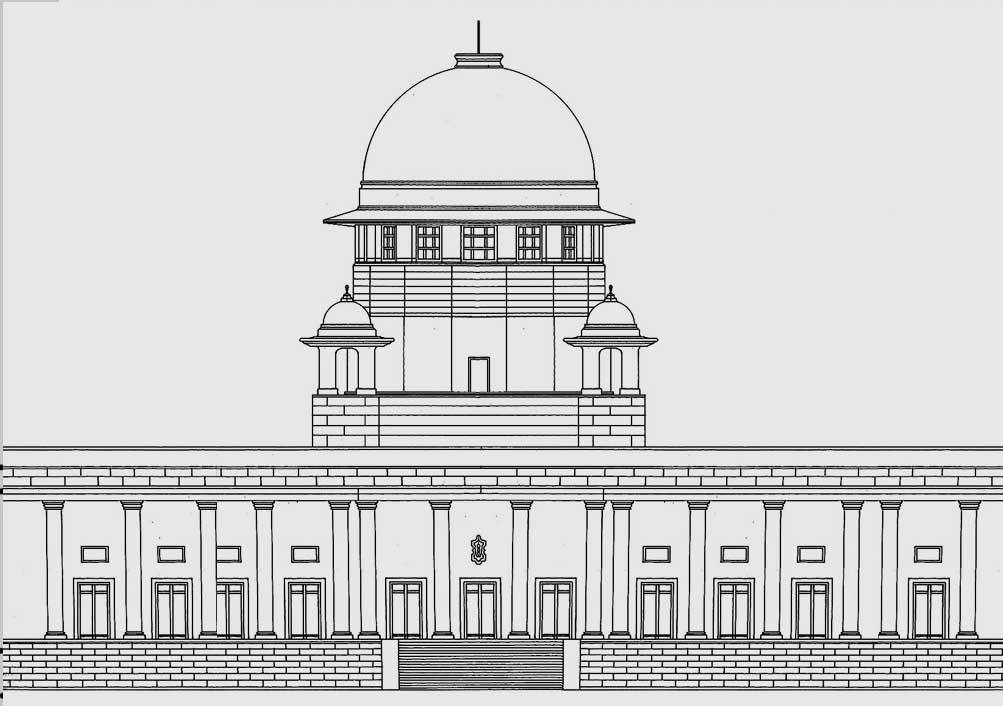‘Clinching and complete chain of incriminating circumstances:’: Apex Court confirms life sentence imposed upon man for murdering his wife
Justices B.R. Gavai & Sandeep Mehta [07-05-2024]

Read Order: SUKHPAL SINGH v. NCT OF DELHI [SC- CRIMINAL APPEAL NO(S). 55 OF 2015]
LE Correspondent
New Delhi, May 8, 2024: The Supreme Court has upheld the conviction of a man in his wife's murder case after noting that the complainant's statement itself provided a complete chain of circumstantial evidence sufficient to establish the guilt of the accused appellant. The Top Court also considered the fact that the accused vanished from the crime scene and remained absconding for nearly 10 years.
The accused appellant was married to Usha and three children were born out of the wedlock. However, the spouses got embroiled in a matrimonial strife and thus the appellant left company of his wife Usha and started residing at his village in U.P.
The officers of Police Station Bhajan Pura received a wireless regarding the murder. When the police reached the location,they saw Usha w/o Sukhpal(appellant herein) lying dead on a cot in a room of the said house. The police officials claimed to have recovered a handwritten note from the crime scene bearing a recital indicating that the scribe was the killer of Usha. One of the neighbors, Ashok Kumar Pathak, had given his statement saying that Sukhpal suspected his wife Usha of infidelity which often led to quarrels between them and, therefore, Sukhpal left his wife.
Four days prior to the alleged occurrence, Sukhpal had visited Usha and on that day, Usha’s sister(Sudha) had also come there. Sukhpal quarreled with Usha and went away.On the day prior to the incident, he saw that Sukhpal had come to visit Usha on his cycle. The next morning when the complainant did not see any movement in the house for the entire day, he called the police as he bore a suspicion that Sukhpal(appellant herein) might have killed Usha sometime during the night and had fled away. This statement was taken as a complaint and based thereupon the FIR came to be registered. The dead body of Usha was subjected to autopsy and the post mortem report was received with a pertinent opinion that cause of death was “Asphyxia resulting from manual strangulation”.
The appeal, before the Top Court, was directed against the judgment of the Delhi High Court whereby the appeal filed by the appellant against the order of the Trial Court was rejected. By the said judgment, the trial Court convicted the accused appellant for the offence punishable under Section 302 of the Indian Penal Code, 1860 and sentenced him to life imprisonment and fine of Rs.2000.
The main thrust of submissions advanced by the legal aid counsel representing the appellant was that only the Section 161 CrPC statement of complainant Ashok Kumar Pathak was exhibited by the Investigating Officer(PW-13) and he never stepped into the witness box.The Division Bench of Justice B.R. Gavai & Justice Sandeep Mehta found this submission to be without any foundation. It was noticed that the accused appellant was absconding and could not be arrested. Thus, the Investigating Officer(PW-13) made all possible efforts to locate the accused appellant at various locations, without any success.
Moreover, the trial Judge recorded the statement of Ashok Kumar Pathak, the complainant as PW-1 under Section 299 CrPC after administrating oath to him. This statement had the signature of the presiding officer of the Court and so also of the complainant Ashok Kumar Pathak. Three more witnesses, namely, Head Constables Mohan Lal and Surender Kumar and Inspector Bal Kishan were also examined on oath in proceedings under Section 299 CrPC.
The Bench opined that circumstances of motive, last seen, confession and abscondence from the crime scene after committing the crime are all spoken to by the witness Ashok Kumar Pathak(PW-1) in his statement recorded on sworn affirmation during the proceedings under Section 299 CrPC. As per the Bench, Ashok Kumar Pathak had no motive whatsoever to falsely implicate the accused appellant for the murder of Usha.
The fact regarding Usha’s homicidal death was also not in dispute as the Medical Jurist(PW-15) gave categoric testimony to the effect that Usha had been manually strangled and the cause of death was Asphyxia.
As per the Bench, the statement of Ashok Kumar Pathak by itself provided a complete chain of circumstantial evidence sufficient to establish the guilt of the accused appellant. The accused appellant vanished from the crime scene and remained absconding for a period of nearly 10 years. He could be apprehended on August 9, 2000, whereafter, regular trial was conducted. Despite ample efforts being made by the Investigating Agency to summon and examine Ashok Kumar Pathak, he could not be traced out and produced in the witness box for deposition during trial after the accused had been arrested.
Referred to the judgements in Nirmal Singh v. State of Haryana [LQ/SC/2000/602] and Jayendra Vishnu Thakur v. State of Maharashtra & Another [LQ/SC/2009/1239], the Bench held, “Viewed in light of the provisions of Section 299 CrPC read with Section 33 of the Indian Evidence Act, 1872 as interpreted by this Court in the case of Nirmal Singh(supra) and Jayendra Vishnu Thakur(supra), the trial Court was justified in holding that the statement of Ashok Kumar Pathak recorded in these proceedings was fit to be read as a piece of substantive evidence. We concur with the findings recorded by the trial Court and affirmed by the High Court on this vital aspect of the matter.”
The evidence of the sister of the deceased also established the motive attributed to the accused appellant for commission of the murder. Moreover, in view of what had been stated by Ashok Kumar Pathak in his testimony recorded under Section 299 CrPC, it was clear that no one other than the accused appellant was present in the house with Usha on the night she was murdered.
“As is required under law, the handwriting expert Deepa Verma was examined as a witness(PW-24) and she proved the report(Exhibit PW-12/F) establishing the fact that the handwriting on the confessional note(Exhibit PW-12/E) recovered from the crime scene matched with the handwriting of the accused appellant on the specimen and admitted writings”, the Bench held.
Thus, the Bench held that the prosecution had established the links in the chain of incriminating circumstantial evidence.
These links were motive; last seen together aspect; medical evidence establishing that the cause of death of the deceased was homicidal.Other links included the confessional note, abscondence for nearly 10 years, wrong explanation given by the accused in his statement under Section 313 CrPC and failure of the accused to offer explanation for the homicidal death of his wife in the night time when only the accused and deceased were present in the house leading to the interference of guilt by virtue of Section 106 of the Indian Evidence Act, 1872.
Thus, confirming the view taken by the trial Court and the High Court in convicting and affirming the conviction of the accused appellant for the charge of committing murder of Usha, the Bench dismissed the appeal.
Sign up for our weekly newsletter to stay up to date on our product, events featured blog, special offer and all of the exciting things that take place here at Legitquest.




Add a Comment